The interaction with light and particles or water droplets in the atmosphere produces a number of interesting and important effects:
- Refraction
- Reflection
- Scattering
- Diffraction
- polarization
First let's consider what can happen when incident light encounters a spherical water droplet:
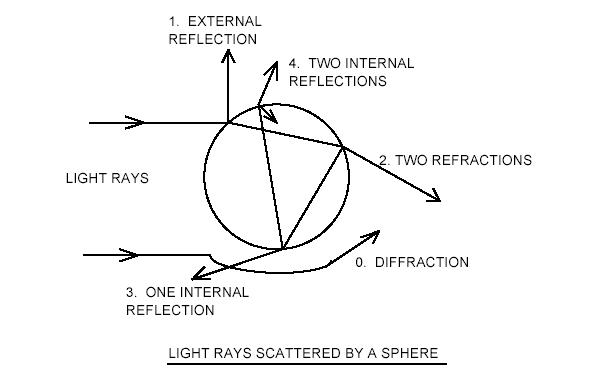
Descartes was the first to mostly solve the appearance
of rainbows.
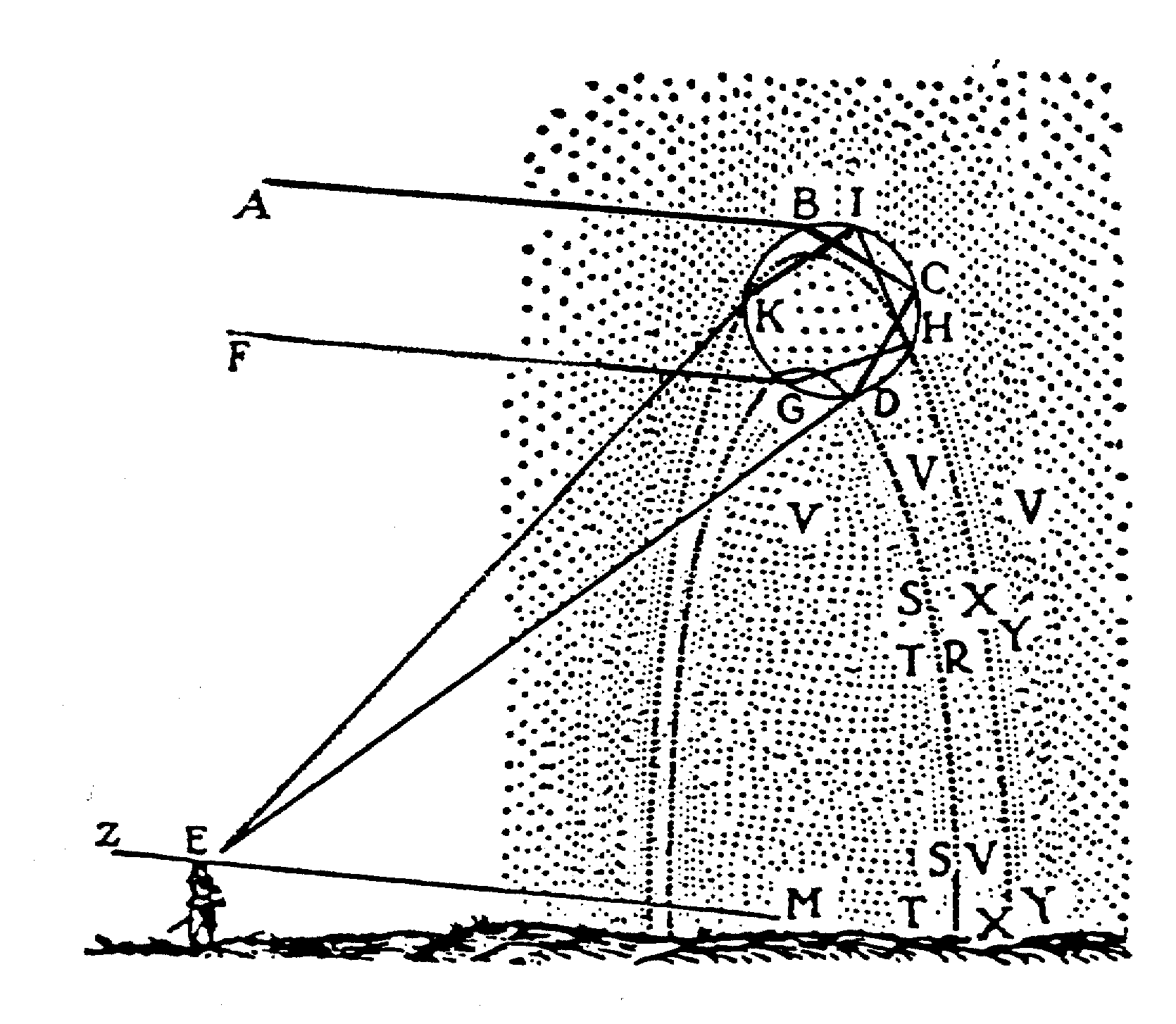
But there is a wealth of various atmospheric optics phenomena that are commonly observed but not understood by most observations including physics students.
Halos:
This are formed through refractions by ice crystals and come
in two forms. 22 and 46 degree halos. Ice crystals can come
in many shapes, from flat plates to hexagonal or columnar
configurations. The shape depends on the environmental temperature in which the crystal grows:

In general, ice crystals grow to in accordance with what ever pattern represents a minimum energy surface state given the conditions.
46 degree halo is formed by refraction path through randomly oriented hexagonal ice crystal (this is a minimum surface energy state): 
A 22 degree halo forms due to a different orientation of the ice crystal, one where the
long side is perpendicular to incoming sun/moon light: 
These halos are best observed for moon light and often times carry predictive power of precipitation coming in a few hours.
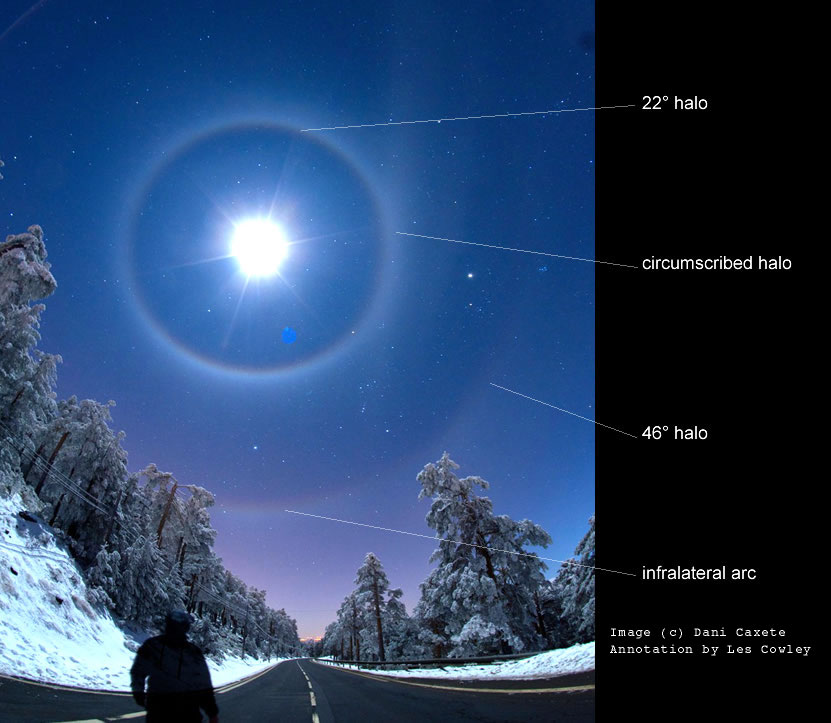
Rainbows: Primary, Secondary and Tertiary:
A tertiary rainbow is an elusive observation:
Photographic evidence for the third-order rainbow, M Grossmann, E Schmidt, & A Haussmann, Applied Optics, Vol. 50, Issue 28, pp. F134-F141 (2011) and there have been only one or two confirmed.
But there are a lot of claims, including this one of a quadruple rainbow (but the third and fourth orders are way too bright)
Primary Rainbow: (One Internal Reflection)
This is a fairly simple mechanism (which also provides empirical
proof for spherical droplets) that requires a back reflection from the droplet and then dispersion through wavelength dependent
refraction. The thickness of the rainbow is about 2 angular
degrees:
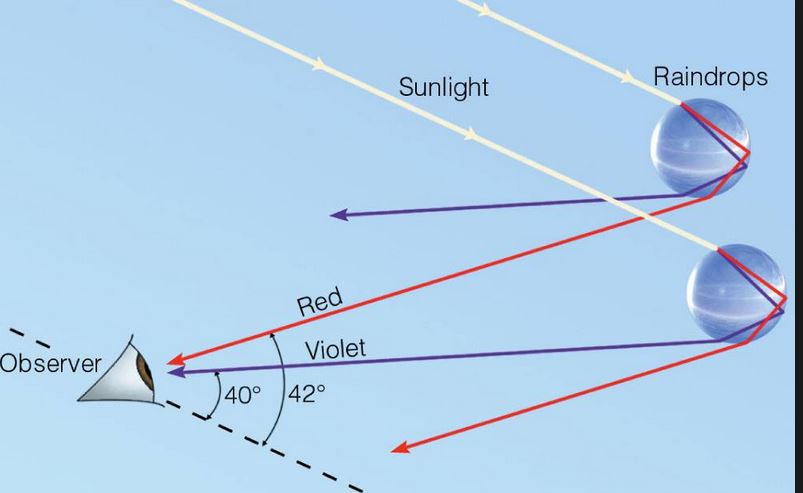
Secondary Rainbow: (Two internal Reflections)
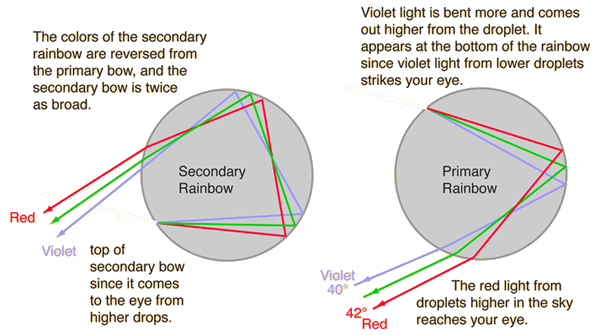
The secondary rainbow is separated from the primary rainbow
by about 10 degrees or about 5 times the thickness of the primary rainbow. The colors are reversed due to the multiple reflections
inside the droplet.
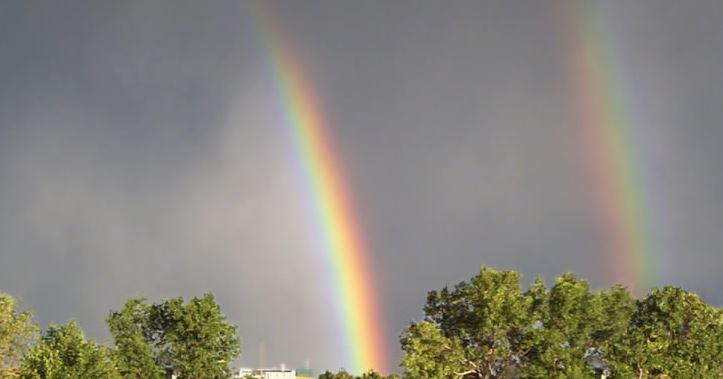
Ice Crystal Optics:
These can be seen all year round but are more prominent
in the winter months. If you see lots of cirrus in the sky, then
look at the Sun, particularly near sunset, to see some of these
features:
Sun Dogs: (22 degree lensing) - common occurence
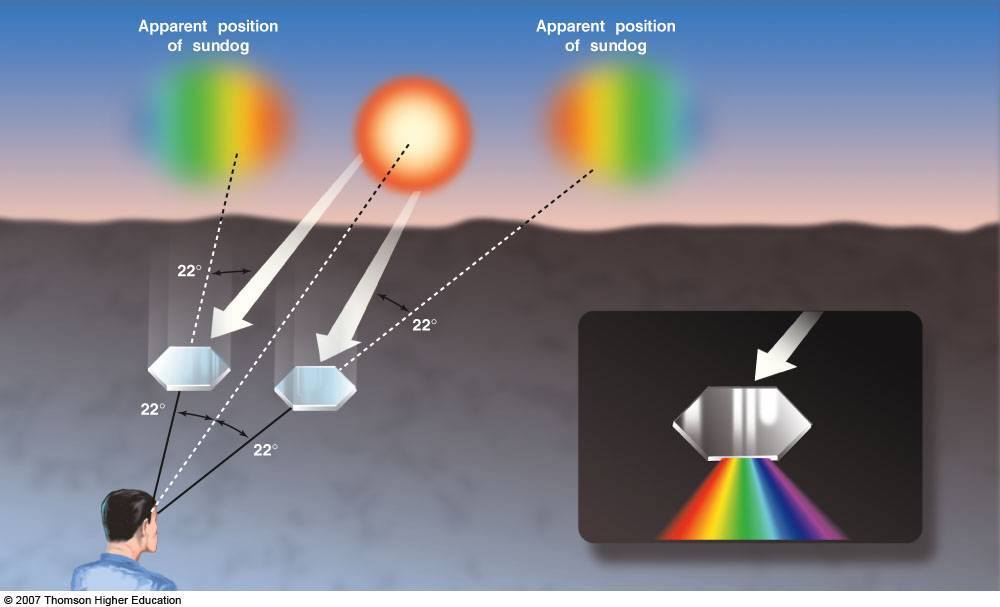
Often there but frequently unobserved:
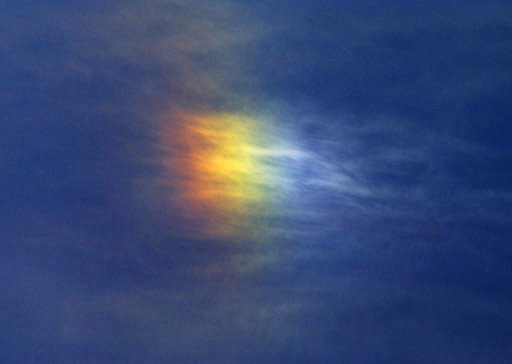
Pretty Obvious:
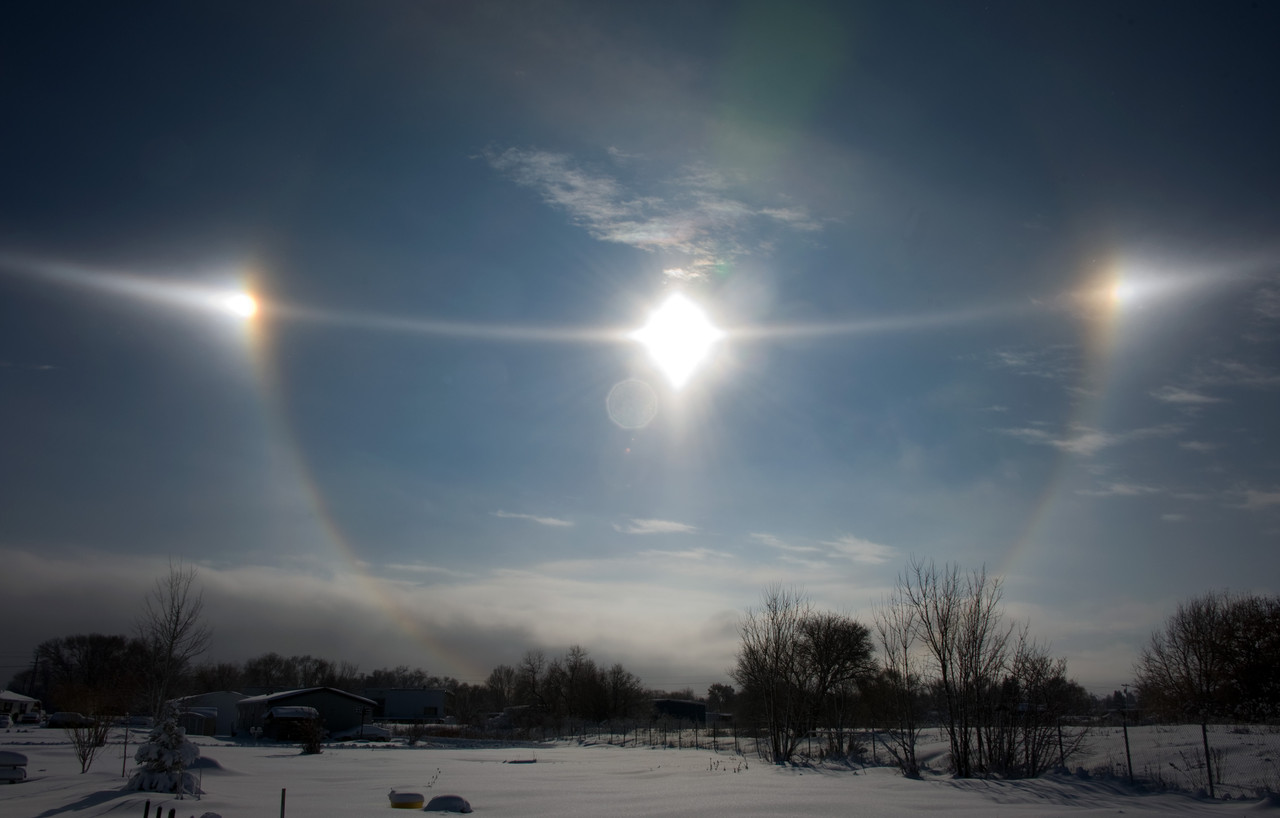
Sun Pillars: Rare - seen at sunrise/sunset - represents direct reflections from millions of tiny ice crystals - effects are sometimes colorful and complicated depending on where the crystals are located.
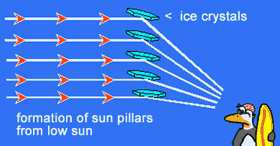
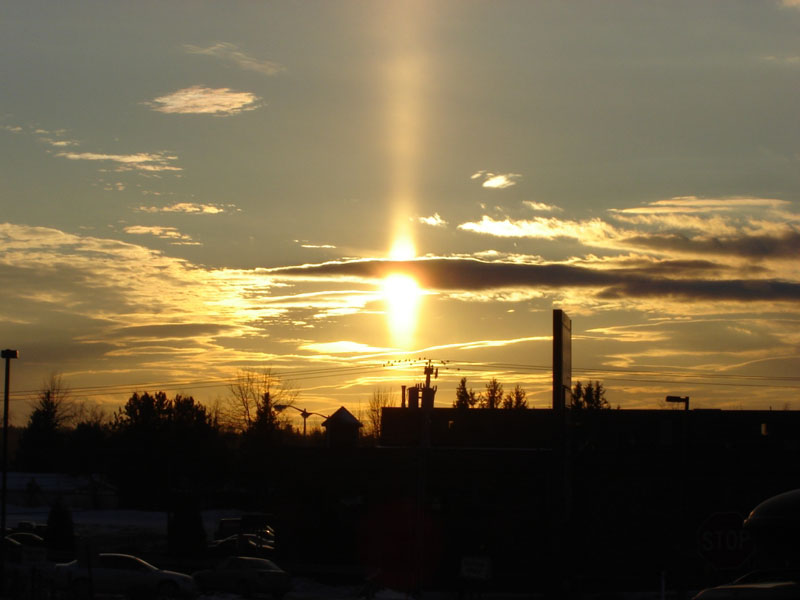
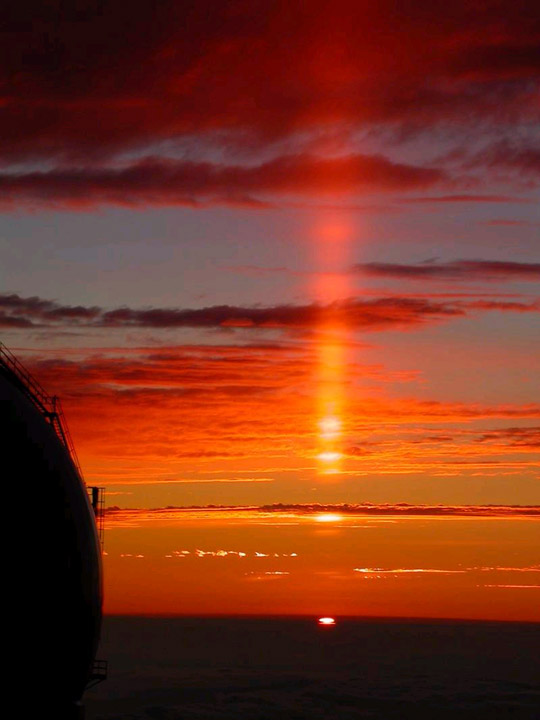
Glories - usually seen on airplanes projected on clouds below:
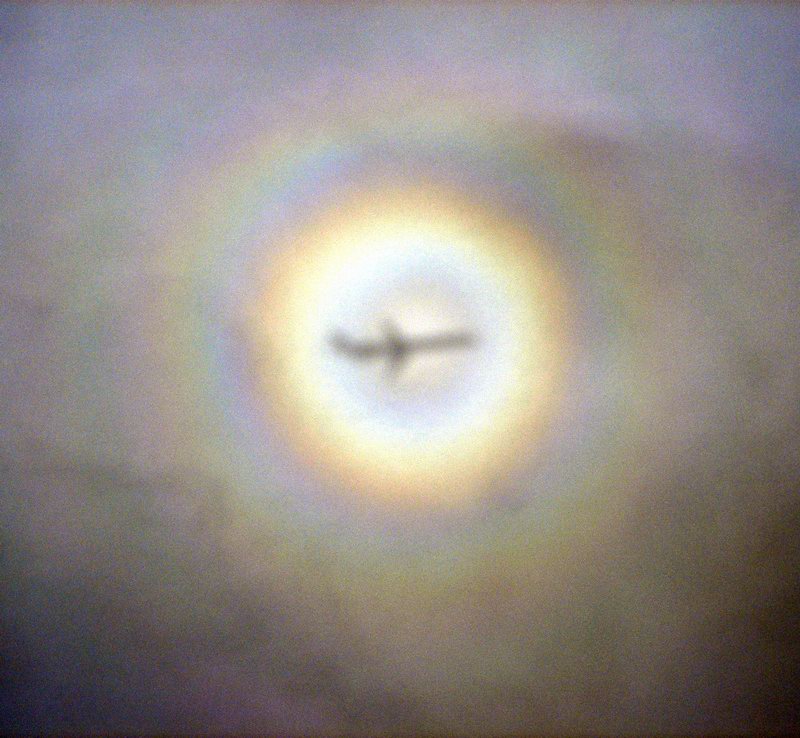
The formation of a glory can occur whenever the sun is
directly behind you and there is a mist or fog or whatever
consisting of tiny uniform droplets that back scatter (thorugh MIE scattering) the incoming
sunlight. If the mist is nearby you can form the glory -
this can be seen on mountain ridges at sunrise:
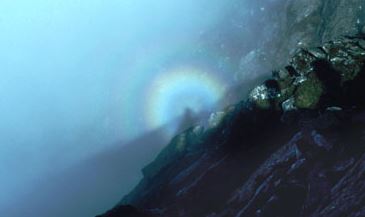
The Fata Morgana
A mirage seen in a narrow band on the horizon whenever there is a temperature inversion. The air below the line of sight is
colder and denser than the air above it, and hence has a different refractive index. The light passing through this layer is bent down so the object image appears to float above the layer. The best place to observe this is over a uniform surface like ice sheets, water, or a smooth desert.

Mountains can appear higher under such conditions:

Noctilucent Clouds
They are the highest clouds in the Earth's atmosphere, located in the mesosphere at altitudes of around 76 to 85 kilometres (47 to 53 mi). They are normally too faint to be seen, and are visible only when illuminated by sunlight from below the horizon while the lower layers of the atmosphere are in the Earth's shadow. Noctilucent clouds are not fully understood and are a recently-discovered meteorological phenomenon; there is no record of their observation before 1885.
Noctilucent clouds can form only under very restrictive conditions; their occurrence can be used as a sensitive guide to changes in the upper atmosphere. They are a relatively recent classification. The occurrence of noctilucent clouds appears to be increasing in frequency, brightness and extent. It is theorized that this increase is connected to climate change.
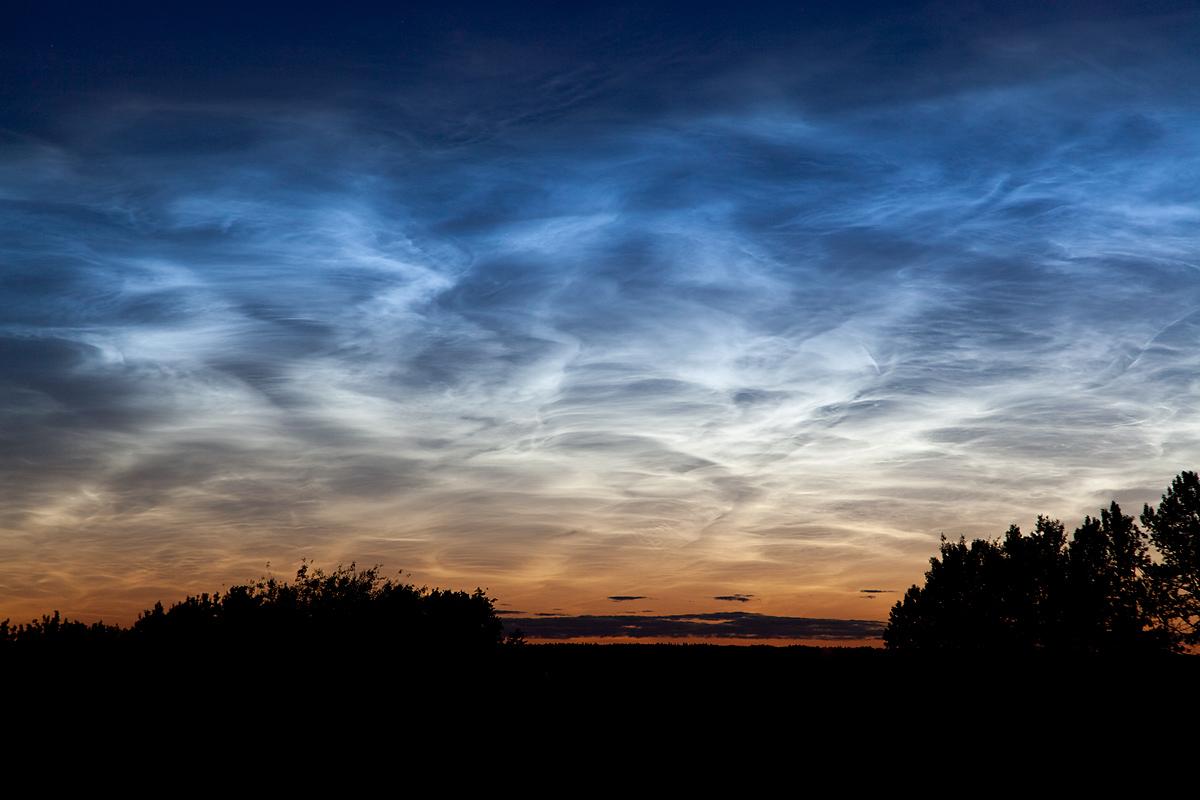
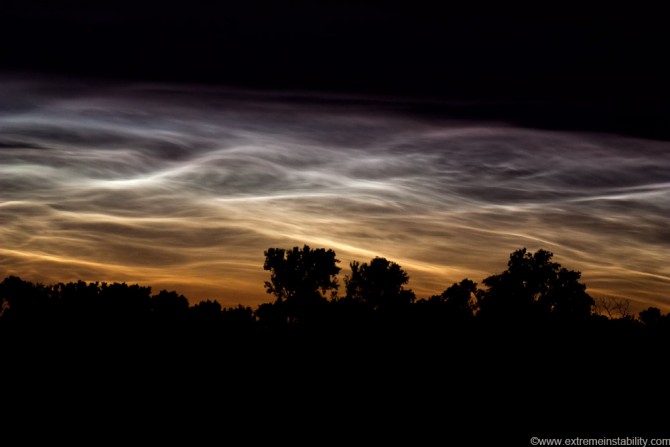 Most likely these clouds are being enhanced by technology pollution (high altitude flying, rocket exhausts, etc, etc).
Most likely these clouds are being enhanced by technology pollution (high altitude flying, rocket exhausts, etc, etc).
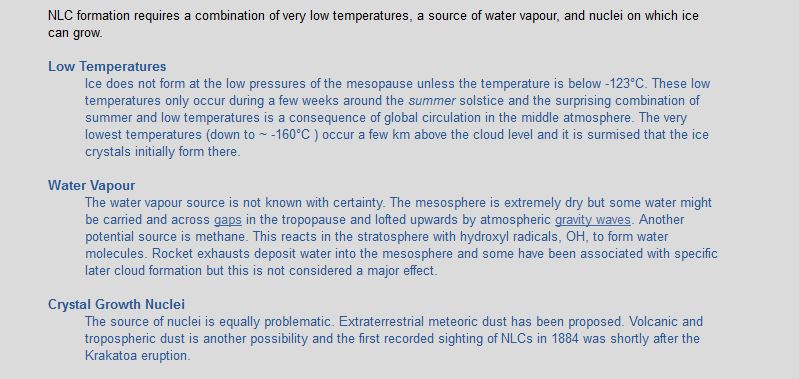
|